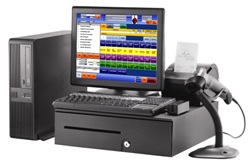 |
 |
|
|
High marks guarantee with these IREB-CPRE-FL cheatsheet | stasolutionz
Latest 2025 MCQs of IREB Certified Professional for Requirements Engineering - Foundation Level (CPRE-FL) |
| Question: I receive the message that my test simulator is updating, how long it takes? Answer: It has been done immediately, but sometimes it can take up to 2 to 6 hours. It depends on server load. You should be patient, it is to your benefit that the server checks for the latest test dump before it is set up in your account for download. |
| Question: When It is good time to buy IREB-CPRE-FL question bank? Answer: You can register at killexams.com when you decide to prepare for your test and have time to study and memorize the questions and answers. There are 3 months, 6 months, and 1-year get accounts available at killexams.com according to the genuine test planning of candidates. It is always a good time to register and get the examcollection because you will have enough time to study and memorize the practice test. |
| Question: I see that the number of questions are reduced, What is matter? Answer: Killexams certification team updates the test according to the genuine source of the exam. That's why, if new questions are added, the number of questions will be more than the previous update, but if questions are removed, they also remove those questions and keep their files up to date. That's is the reason, you see fewer questions than in the previous file. They do not keep obsolete content. |
| Question: I can read IREB-CPRE-FL PDF but I am unable to run test simulator, can you help? Answer: Exam Simulator and PDF use the same question/answers pool. If your test simulator is not working, you should go through step by step guide to install and run the test simulator. The guide can be accessed at https://killexams.com/exam-simulator-installation.html You should also go through FAQ for troubleshooting. If you still could not solve the issue, you can contact support via live chat or email and they will be happy to solve your issue. Their live support can also login to your computer and install the software if you have TeamViewer installed on your computer and you send us your private login information. |
| Question: Can I get maximum discount on buying IREB-CPRE-FL cheatsheet? Answer: Killexams provide the cheapest hence up-to-date IREB-CPRE-FL examcollection that will greatly help you pass the exam. You can see the cost at https://killexams.com/exam-price-comparison/IREB-CPRE-FL You can also use a discount coupon to further reduce the cost. Visit the website for the latest discount coupons. |
Selecting a trustworthy provider for certification practice questions can be challenging, as the quality and reliability of resources vary widely. Killexams.com is committed to delivering top-tier practice questions and test dumps, ensuring their materials are always current, valid, and effective. Unlike less reputable services that may lead to disappointment, Killexams.com prioritizes customer satisfaction, offering meticulously crafted practice questions that follow the genuine test in PDF as well as test eingine which is an advanced test simulator designed to help candidates to practice practice questions and succeed with confidence. Their dedication to quality is reflected in the trust and success of thousands of satisfied customers who have passed their exams with ease using their resources.
We take pride in maintaining the highest standards of integrity, ensuring their practice questions contain accurate and genuine questions. While some competitors may spread misleading claims about Killexams.com, they encourage you to explore their sample questions and test simulator to experience the quality firsthand. Visit Killexams.com to discover why they are a trusted leader in certification preparation, empowering candidates to achieve their goals with confidence.
Which is the best practice questions website?
Yes, Killexams is 100 percent legit plus fully trusted. There are several attributes that makes killexams.com real and genuine. It provides up-to-date and 100 percent valid test questions comprising real exams questions and answers. Price is nominal as compared to a lot of the services on internet. The Q&A are up-to-date on usual basis by using most exact questions. Killexams account make and products delivery can be quite fast. Data downloading is certainly unlimited as well as fast. Assist is avaiable via Livechat and Electronic mail. These are the features that makes killexams.com a robust website that come with test prep with real exams questions.
Is killexams.com test material dependable?
Many websites claim to provide genuine test Questions, Braindumps, Practice Test, Study Guides, and cheat sheets, but most of them are simple re-sellers offering outdated content. Killexams.com stands out in 2025 as the leading platform that truly understands the challenges candidates face when wasting time on obsolete materials from free PDF sites or reseller sources. That is why Killexams.com regularly updates its MCQs to match the latest Real test Questions. Every question in the Killexams.com MCQs is reliable, verified, and kept up-to-date by certified professionals who monitor daily test updates.
If you want to pass your test quickly while also improving your knowledge of the latest syllabus topics, they strongly recommend downloading the PDF MCQs, test Questions and practice questions from Killexams.com. Preparing with these resources ensures that you are ready for the genuine exam. When you upgrade to the Premium Version, simply register at Killexams.com — you will receive your Username and Password within 5 to 10 minutes by email. All future updates to MCQs are automatically included in your account, and you can get the updated files as many times as needed without restrictions.
To make your preparation even more effective, Killexams.com provides Test Engine Software. This tool allows you to practice with Real test Questions, track your progress, and take unlimited practice tests. The more you practice, the faster and more confident you become. Once you consistently achieve 100% marks with the complete pool of updated questions, you will be fully prepared to take the genuine test at the Exam Center and achieve success.
BONENT-CHBT Latest Topics | CCTM test prep | CISM pdf questions | DMV cheat sheet | AX0-100 practice test | GAFM-CCBP Braindumps | PCCN boot camp | MB-800 prep questions | BCS-BAP mock test | RACP Study Guide | PSSC examcollection | H12-261 test example | DipHSML323 mock test | C1000-169 test prep | GAFM-COHSM practice questions | ACRP-CCRC genuine qeustions | GAFM-ChL free test papers | ACA-915 sample questions | HDI-DAST free pdf dumps | CertFSL217 free pdf |
IREB-CPRE-FL - IREB Certified Professional for Requirements Engineering - Foundation Level (CPRE-FL) education
IREB-CPRE-FL - IREB Certified Professional for Requirements Engineering - Foundation Level (CPRE-FL) Study Guide
IREB-CPRE-FL - IREB Certified Professional for Requirements Engineering - Foundation Level (CPRE-FL) information search
IREB-CPRE-FL - IREB Certified Professional for Requirements Engineering - Foundation Level (CPRE-FL) test Questions
IREB-CPRE-FL - IREB Certified Professional for Requirements Engineering - Foundation Level (CPRE-FL) Questions and Answers
IREB-CPRE-FL - IREB Certified Professional for Requirements Engineering - Foundation Level (CPRE-FL) certification
IREB-CPRE-FL - IREB Certified Professional for Requirements Engineering - Foundation Level (CPRE-FL) certification
IREB-CPRE-FL - IREB Certified Professional for Requirements Engineering - Foundation Level (CPRE-FL) test contents
IREB-CPRE-FL - IREB Certified Professional for Requirements Engineering - Foundation Level (CPRE-FL) Latest Questions
IREB-CPRE-FL - IREB Certified Professional for Requirements Engineering - Foundation Level (CPRE-FL) test Cram
IREB-CPRE-FL - IREB Certified Professional for Requirements Engineering - Foundation Level (CPRE-FL) Practice Questions
IREB-CPRE-FL - IREB Certified Professional for Requirements Engineering - Foundation Level (CPRE-FL) test Questions
IREB-CPRE-FL - IREB Certified Professional for Requirements Engineering - Foundation Level (CPRE-FL) premium pdf
IREB-CPRE-FL - IREB Certified Professional for Requirements Engineering - Foundation Level (CPRE-FL) Practice Questions
IREB-CPRE-FL - IREB Certified Professional for Requirements Engineering - Foundation Level (CPRE-FL) test Questions
IREB-CPRE-FL - IREB Certified Professional for Requirements Engineering - Foundation Level (CPRE-FL) teaching
IREB-CPRE-FL - IREB Certified Professional for Requirements Engineering - Foundation Level (CPRE-FL) education
IREB-CPRE-FL - IREB Certified Professional for Requirements Engineering - Foundation Level (CPRE-FL) exam
IREB-CPRE-FL - IREB Certified Professional for Requirements Engineering - Foundation Level (CPRE-FL) PDF questions
IREB-CPRE-FL - IREB Certified Professional for Requirements Engineering - Foundation Level (CPRE-FL) Free PDF
IREB-CPRE-FL - IREB Certified Professional for Requirements Engineering - Foundation Level (CPRE-FL) real questions
IREB-CPRE-FL - IREB Certified Professional for Requirements Engineering - Foundation Level (CPRE-FL) test help
IREB-CPRE-FL - IREB Certified Professional for Requirements Engineering - Foundation Level (CPRE-FL) techniques
IREB-CPRE-FL - IREB Certified Professional for Requirements Engineering - Foundation Level (CPRE-FL) PDF download
IREB-CPRE-FL - IREB Certified Professional for Requirements Engineering - Foundation Level (CPRE-FL) Real test Questions
IREB-CPRE-FL - IREB Certified Professional for Requirements Engineering - Foundation Level (CPRE-FL) test questions
IREB-CPRE-FL - IREB Certified Professional for Requirements Engineering - Foundation Level (CPRE-FL) education
IREB-CPRE-FL - IREB Certified Professional for Requirements Engineering - Foundation Level (CPRE-FL) Real test Questions
IREB-CPRE-FL - IREB Certified Professional for Requirements Engineering - Foundation Level (CPRE-FL) exam
IREB-CPRE-FL - IREB Certified Professional for Requirements Engineering - Foundation Level (CPRE-FL) Question Bank
IREB-CPRE-FL - IREB Certified Professional for Requirements Engineering - Foundation Level (CPRE-FL) information hunger
IREB-CPRE-FL - IREB Certified Professional for Requirements Engineering - Foundation Level (CPRE-FL) test questions
IREB-CPRE-FL - IREB Certified Professional for Requirements Engineering - Foundation Level (CPRE-FL) test contents
IREB-CPRE-FL - IREB Certified Professional for Requirements Engineering - Foundation Level (CPRE-FL) test prep
IREB-CPRE-FL - IREB Certified Professional for Requirements Engineering - Foundation Level (CPRE-FL) testing
IREB-CPRE-FL - IREB Certified Professional for Requirements Engineering - Foundation Level (CPRE-FL) course outline
IREB-CPRE-FL - IREB Certified Professional for Requirements Engineering - Foundation Level (CPRE-FL) techniques
IREB-CPRE-FL - IREB Certified Professional for Requirements Engineering - Foundation Level (CPRE-FL) teaching
IREB-CPRE-FL - IREB Certified Professional for Requirements Engineering - Foundation Level (CPRE-FL) education
IREB-CPRE-FL - IREB Certified Professional for Requirements Engineering - Foundation Level (CPRE-FL) study help
IREB-CPRE-FL - IREB Certified Professional for Requirements Engineering - Foundation Level (CPRE-FL) Questions and Answers
IREB-CPRE-FL - IREB Certified Professional for Requirements Engineering - Foundation Level (CPRE-FL) test help
IREB-CPRE-FL - IREB Certified Professional for Requirements Engineering - Foundation Level (CPRE-FL) test questions
IREB-CPRE-FL - IREB Certified Professional for Requirements Engineering - Foundation Level (CPRE-FL) PDF questions
CPUX-F real questions | CTFL-AT cbt | IREB-CPRE-FL Practice test | A4Q-CSeT-F test dumps | CTAL-TM-UK questions and answers | CTAL-TM-001 free test papers | CTFL-PT past exams | CTAL-TTA-001 test prep questions | CTAL-TA Free PDF | CTFL-AuT sample questions |
EX200 PDF Download | BCEN-CPEN practice exam | ABTS test cram | ABVM past exams | GAFM-CPIS model question | PCEP-30-02 practice questions | PL-400 training material | 4A0-104 test braindumps | Industries-CPQ-Developer test example | ACSM-GEI real test dumps | CAP mock exam | ACNPC-AG dumps download | Salesforce-Certified-Marketing-Cloud-Email-Specialist practice questions | CPHQ pdf exam | ACA online coaching | 1Y0-241 mock questions | GAFM-CCMP VCE | PEGAPCSSA87V1 previous questions | 5V0-61.22 cheatsheet | PCAP-31-03 practice test |
Similar Websites :
Pass4sure Certification test Practice Tests
Pass4Sure Certification Question Bank
| RETAIL POINT OF SALE (POS) |

Retail store owners operate on tight margins, and have many constantly moving parts. This becomes especially difficult to manage efficiently when using manual methods. A point-of-sale system is a great tool to manage all these moving parts while helping to ensure customer satisfaction, but finding the right POS for small business is no easy feat.
POS can help businesses in a variety of ways, including managing inventory, providing customer management data, identifying opportunities and weaknesses in the store and much, much more. |
| EMBRIODRY MANAGMENT SOLUTION |

Embroidery’s Industries can utilize this embroidery management tool in a wide variety of ways which will insure that jobs are scheduled, processed, and delivered on time and with the maximum efficiency. This embroidery management software was developed with your business in mind - whether it be big or small - and can be customized to any unique needs you may have.
You may be a business owner or one of the project managers in an embroidery department, our embroidery management software will take the stress out of organizing and coordinating the activities of both you and your clients. An embroidery business can benefit greatly from embroidery management systems that offer ways to harmonize and coordinate multiple departments. To accomplish this, the embroidery management systems are integrated to allow the user to track various job control systems which may incorporate multiple program management structures. Embroidery Management Capabilities:
|
| HOSPITAL SOLUTION |

It is a complete enterprise management solution that streamlines clinical, administrative, and financial operations of care delivery organizations, providing unprecedented opportunities for productivity, collaboration, and growth.
Whether your goal is to enhance the value of services to your patients, increase reimbursements, improve the overall efficiency of day-to-day operations, or simply stay ahead of compliance requirements,
|